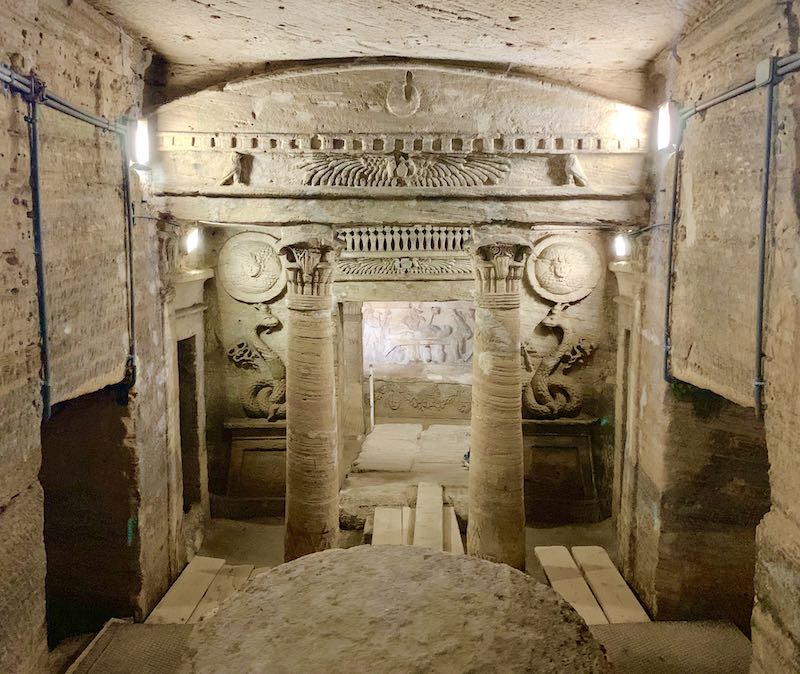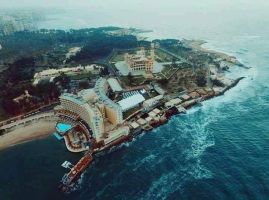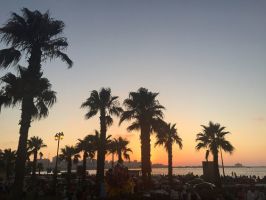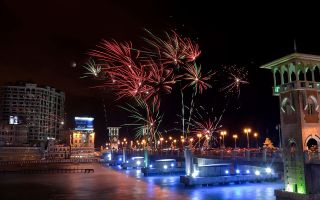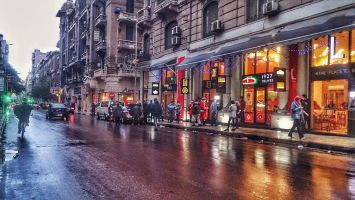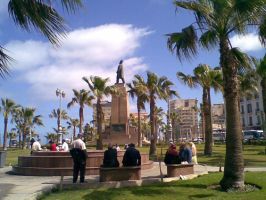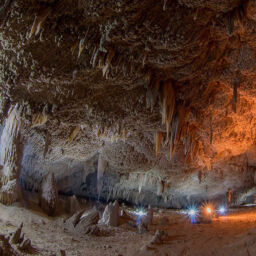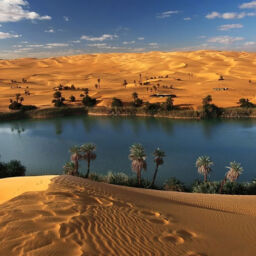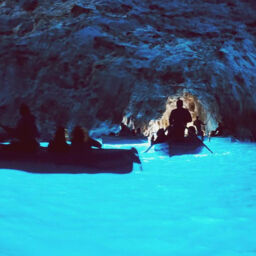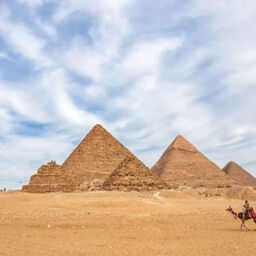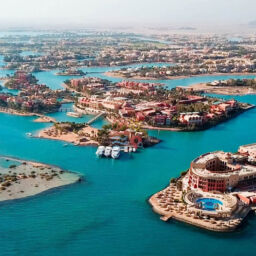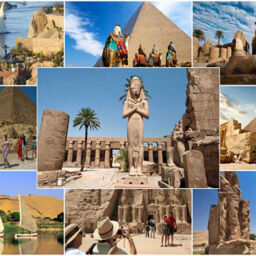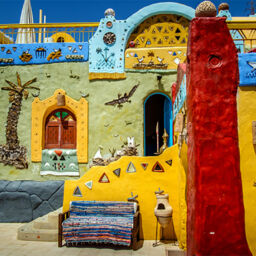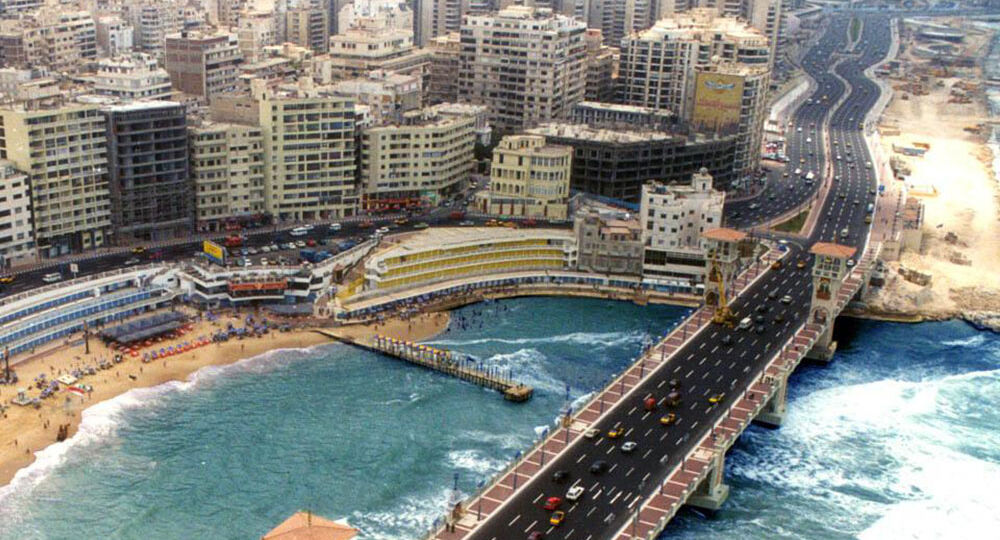
The Pearl of the Mediterranean is the second-largest city in Egypt, the sixth-largest city in the Arab world and the ninth-largest in Africa and considered to be Egypt’s second capital. It was fond by Alexander the Great in 332 BCE until its surrender to the Arab forces led by ʿAmr ibn al-ʿĀṣ in 642 CE. Alexandria offers fascinating insights into its proud Greek past, as well as interesting mosques, the casino strip of the Corniche, some lovely gardens and both modern and traditional hotels.
Discover Alexandria
Bibliotheca Alexandria:
Is a major library and cultural center located on the shore of the Mediterranean Sea in the Egyptian city of Alexandria, it is both a commemoration of the Library of Alexandria that was lost in antiquity, and an attempt to rekindle something of the brilliance that this earlier center of study and erudition represented.
The New Bibliotheca Alexandrina is dedicated to recapture the spirit of openness and scholarship of the original Bibliotheca Alexandrina. It is much more than a library, the unique roles of the Library as that of a great Egyptian Library with international dimensions, will focus on being the world’s window on Egypt, Egypt’s window on the world, a leading institution of the digital age and a center for learning, tolerance, dialogue and understanding.
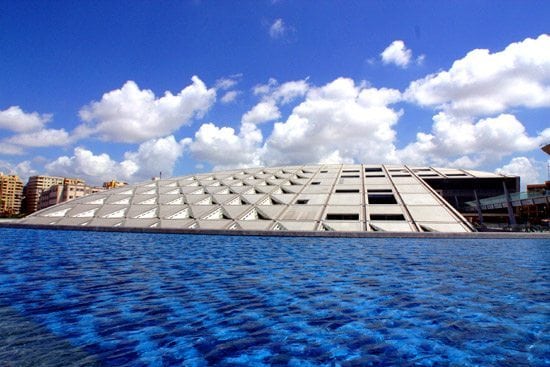
Pompey’s Pillar & The Temple Of Serapeum:
Pompey’s Pillar is a Roman triumphal column in Alexandria, Egypt, the largest of its type constructed outside the imperial capitals of Rome and Constantinople, located at the Serapeum of Alexandria. The only known free-standing column in Roman Egypt which was not composed of drums, it is one of the largest ancient monoliths and one of the largest monolithic columns ever erected.
The Serapeum of Alexandria in the Ptolemaic Kingdom was an ancient Greek temple built by Ptolemy III Euergetes (reigned 246–222 BCE) and dedicated to Serapis, who was made the protector of Alexandria. There are also signs of Harpocrates. It has been referred to as the daughter of the Library of Alexandria, the site is located on a rocky plateau, overlooking land and sea. By all detailed accounts, the Serapeum was the largest and most magnificent of all temples in the Greek quarter of Alexandria.
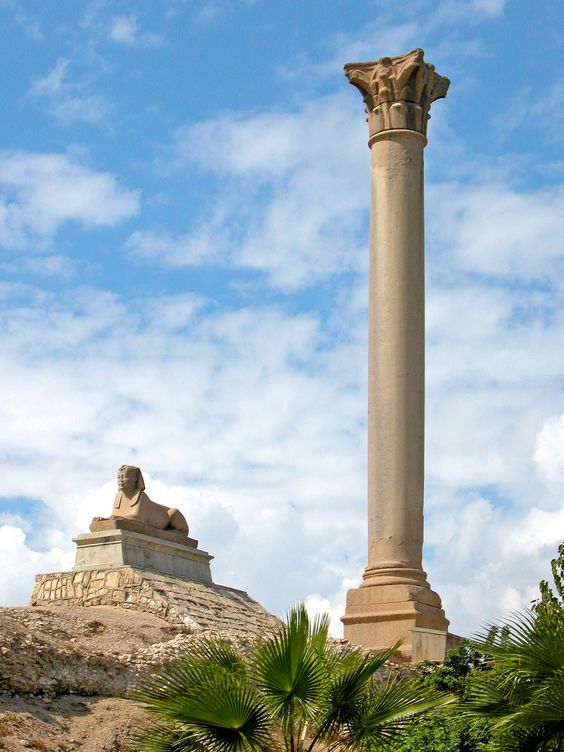
Citadel Qaitbay:
Is a 15th-century defensive fortress located on the Mediterranean Sea coast, in Alexandria, Egypt. It was established in 1477 AD (882 AH) by Sultan Al-Ashraf Sayf al-Din Qa’it Bay. The Citadel is situated on the eastern side of the northern tip of Pharos Island at the mouth of the Eastern Harbour.
is considered one of the most important defensive strongholds, not only in Egypt, but also along the Mediterranean Sea coast. It formulated an important part of the fortification system of Alexandria in the 15th century AD.
The citadel has long since given up any military function. Today it houses a small naval museum, but it might be worth a visit to explore the inside of the fortress and imagine the huge structure that once stood on its foundation.
The peninsula leading to the citadel is also a popular area with fishermen and families alike. It is usually crowded with a pleasant crowd enjoying the sea views, restaurants and ice cream shops that line the street up to the fortress.
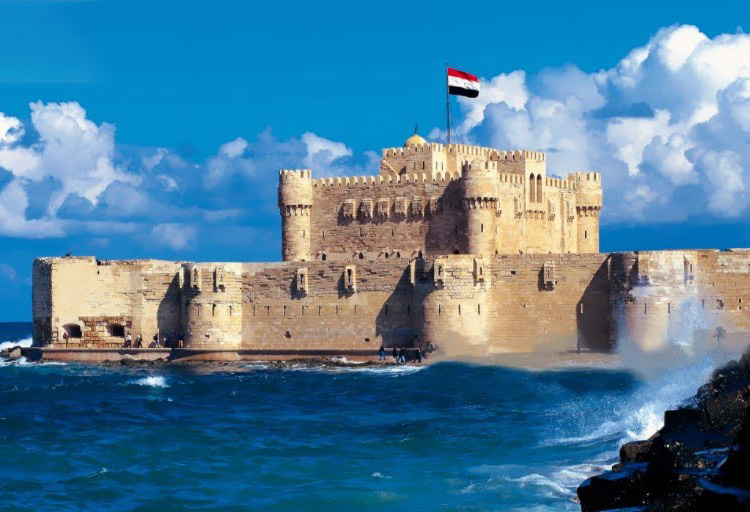
Montazah Palace:
Is a palace, museum and extensive gardens in the Montaza district of Alexandria, Egypt. It was built on a low plateau east of central Alexandria overlooking a beach on the Mediterranean Sea.
The extensive Montaza Palace grounds first had the Salamlek Palace, built in 1892 by Khedive Abbas II, the last Muhammad Ali Dynasty ruler to hold the Khedive title over the Khedivate of Egypt and Sudan. It was used as a hunting lodge and residence for his companion.
The larger Al-Haramlik Palace and royal gardens were added to the Montaza Palace grounds, being built by King Fuad I in 1932, as a summer palace. It is in a mixture of Ottoman and Florentine styles, with two towers. One of these towers rises distinctively high above with elaborated Italian Renaissance design details. The palace has long open arcades facing the sea along each floor.
The Montaza Palace gardens are located at the eastern edge of Alexandria on the north coast of Egypt. The complex, which is around from 360 acres in size, is a beautiful property that overlooks Al Montaza Gulf. The complex also contains five beaches for swimming.
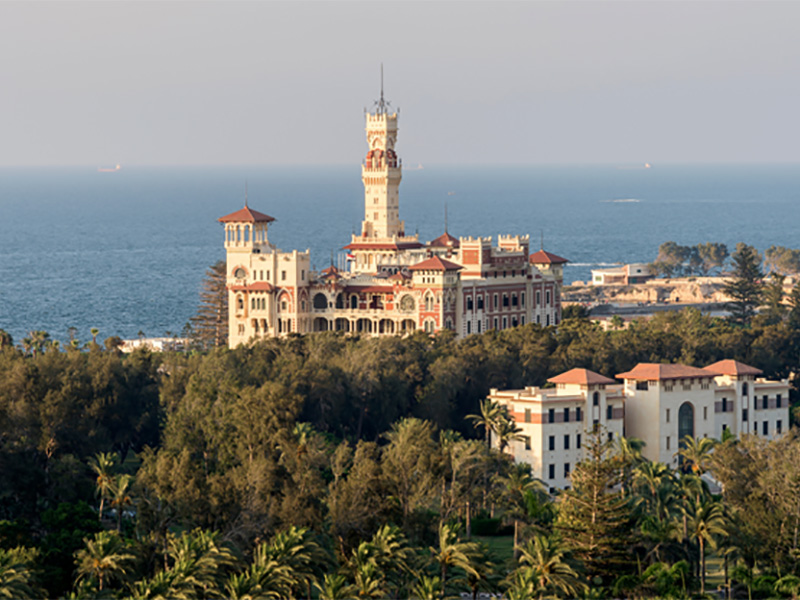
Roman Amphitheatre:
Is one of Alexandria’s most popular monuments and itis the only one of its type in Egypt.
The Roman Amphitheatre of Alexandria was discovered by mere coincidence in the year 1960. When the workers went to remove a pile of dust and sand in 1960 to clear the land for the construction of a governmental building, they found some solid iron columns, indicating that something may be buried underneath. Immediately afterward, the excavation work began in the location of Kom El Dekka and it was carried out by the Greco Roman Museum and the Polish Excavation Mission in Egypt sponsored by the University of Warsaw.
The Roman Amphitheatre stayed in service and was used to host different artistic events like musical concerts and different sorts of events up till the 7th century. This fact was proven due to the architectural elements present in the theatre which show that it was used for three different periods; the Roman, the Byzantine, and the Early Islamic era.
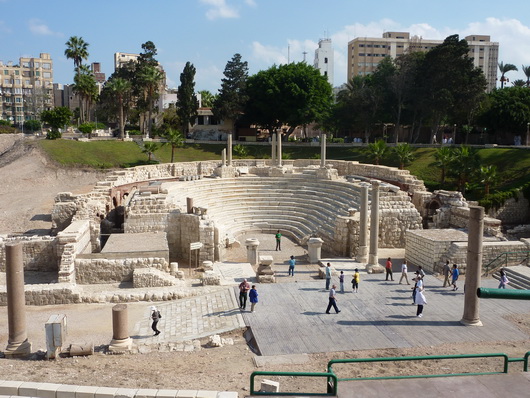
Catacombs Of Kom El Shoqafa:
Is a historical archaeological site located in Alexandria, Egypt, and is considered one of the Seven Wonders of the Middle Ages.
The necropolis consists of a series of Alexandrian tombs, statues and archaeological objects of the Pharaonic funeral cult with Hellenistic and early Imperial Roman influences. Due to the time period, many of the features of the catacombs of Kom El Shoqafa merge Roman, Greek and Egyptian cultural.
The main tomb at the middle level is covered with the sculpture and art that makes this catacomb unique.
it is this mix of art and culture – Egyptian, Greek and Roman – that is not found in any other catacomb in the ancient world that makes Kom el Shoqafa special.
